

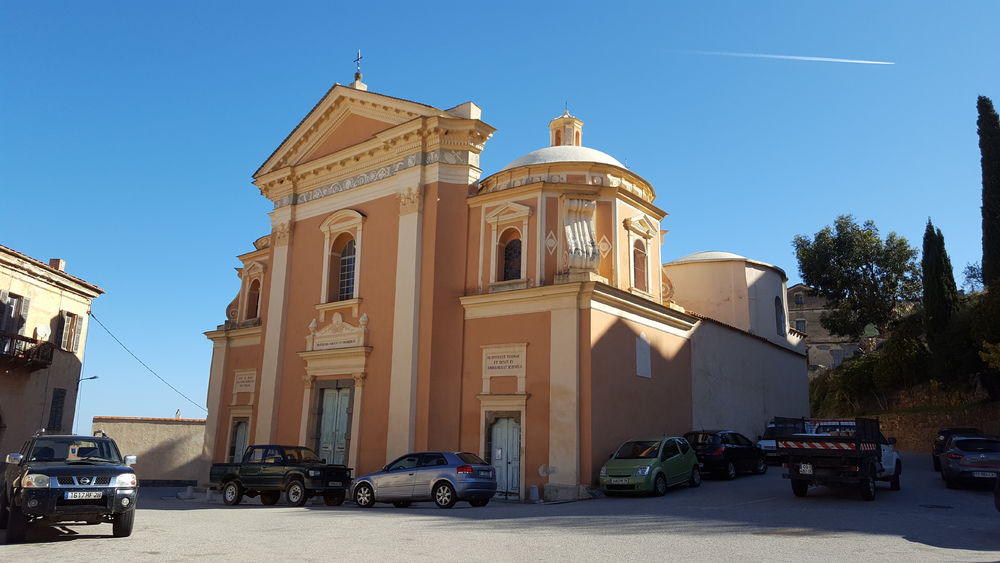
Visit the magnificent church of San Tumasgiu (Saint Thomas) in the heart of Belgodère village.

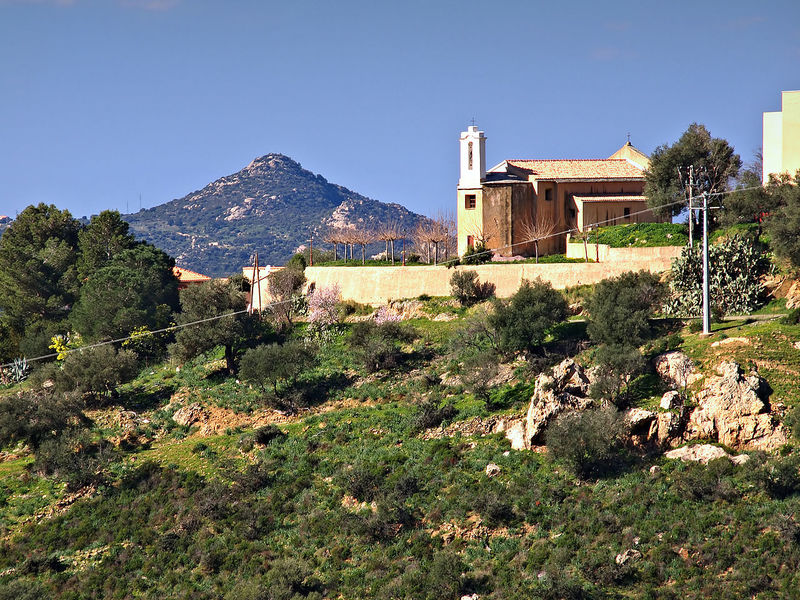
You'll find the chapel of San Ghjuvanni on the edge of the village of Belgodère, on the road to Occhiatana.Built in 1711 on the site of an old oratory, using stones from the destroyed church of San Marcello, this chapel is dedicated to St John the Apostle. It contains a baroque altarpiece in carved wood dating from 1604 and a polychrome statue of Our Lady of Seven Sorrows carved from an olive tree trunk dating from 1545, both of which are listed. On the third Sunday of September, the patronal feast day, a mass is celebrated here followed by a procession.


You'll find San Roccu chapel near Belgodère station, below the village. San Roccu day is celebrated every year in mid-August.


The convent of Nostra Signora delle Grazie in Belgodere was founded in the 16th century by the Capuchin monks. In 1590, the Servites settled there for good. Abandoned by the fathers, it fell into disrepair and is now in ruins.

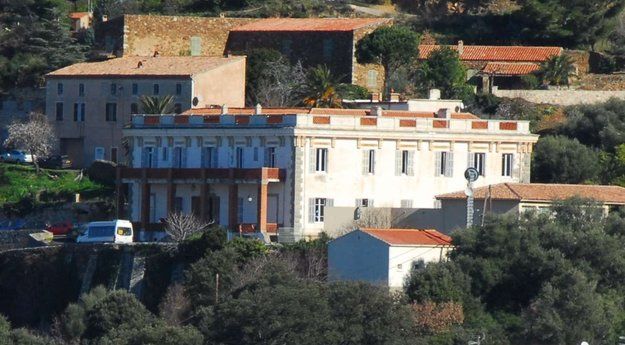
This vast 19th-century mansion stands on the side of A Costa hill. It was built in 1892 by Toussaint Malaspina, a local man and friend of Georges Clémenceau. The gardens of Malaspina castle, in the locality of Ajola, date from the late 19th century.From the height of its century of existence, Malaspina Castle still looks out over Belgodere. Its home, where it has always been useful over the years. Its construction was completed in 1892. This Victorian building, inspired by the Italian palaces, was first named Castle of La Costa and then Castle Malaspina.
The crypt adjacent to the building is still owned by the heirs of the Malaspina family and is due to be restored soon.
The public garden of the castle includes an orchard, an earthen terrace, a chapel in white Carrara marble, a caretaker's lodge and an agricultural building. It was the subject of a preliminary survey in 1996 and was included in the pre-inventory of remarkable gardens (Ministry of Culture, Directorate of Architecture and Heritage, and Ministry of Ecology and Sustainable Development). It has stood in the village since 1892.

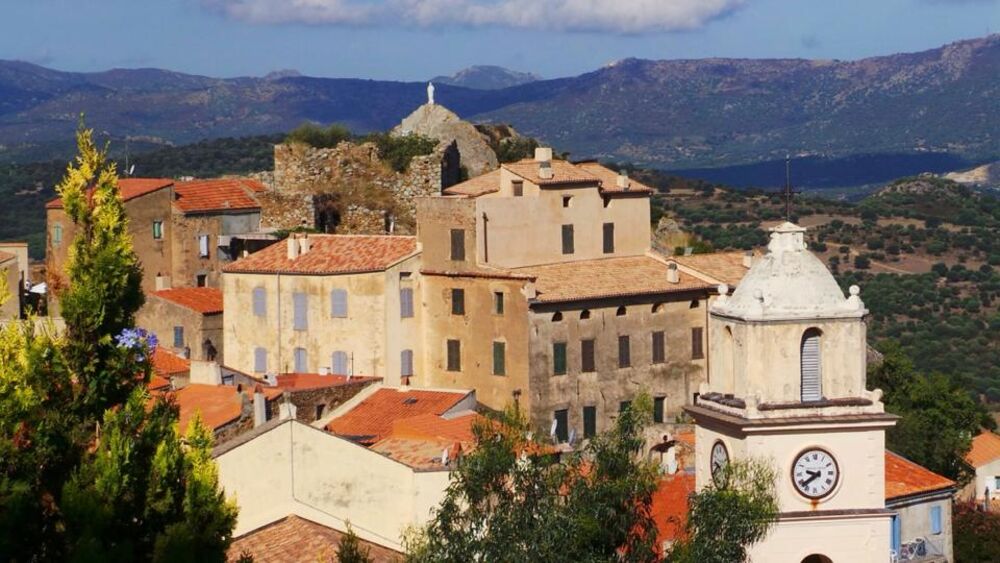
The village is overlooked by the vestiges of E Teghje, a medieval watchtower dating from the 16th century. A statue of the Sacred Heart of Jesus was erected there in the summer of 1991. The site offers remarkable views over the Réginu valley.


The convent was founded on 27 April 1494 by the Franciscans, who only left when the Revolution happened, never to return. It is now privately owned and the owners host various religious events and other celebrations, in an attempt to breathe new life into the site.After the dispersion of 1797 the convent and its garden were sold. In 1812 the municipalities of Costa, Occhiatana and Ville di Paraso bought the church square and the church, which was falling into disrepair. In 1870, the Capuchins were offered the square and the church by the municipalities so that they could restore it and worship there. The Capuchins set about the task and were helped by the population and in particular by Bonaventure Malaspina of Ville di Paraso. On 22 January 1872 the first mass was celebrated in the rebuilt church. In 1873 the superior of the convent bought a 100 kg bell. In the following years the pilgrimages testify to the devotion to the Virgin. The Pontiff, by a decree of 09/12/1875, granted that the solemnity of Our Lady of Lourdes could be celebrated in Tuani, the convent took the name of Our Lady of Lourdes, while the church was dedicated to St John the Baptist (Pieve San Giovanni di Tuani being part of the diocese of Marana). On 10 June 1880, as the expulsion of the religious was feared, Mr Malaspina was asked to mortgage the convent for 4000fr in order to save it. In 1903, new expulsions took place and the convent remained closed until the return of the religious in 1920. Immediately the traditions were resumed and the feast of Our Lady of Lourdes was henceforth solemnly celebrated on the first Sunday in May. On January 16, 1967, as there were too few religious, the convent was closed. It was sold to Catherine Deneuve on July 28, 1969 via a company in Liechetenstein. The festival is no longer celebrated and the convent is no longer maintained; it is finally sold in 1977 and the new owners try to bring back to life this place full of history, the festival takes place there every year with mass and procession, concerts are given. The convent was listed in the Inventaire Supplémentaire des Monuments Historiques (Supplementary Inventory of Historical Monuments) by a decree of the Ministry of Agriculture and the Environment on 30 March 1978. The bell tower was restored in 1980 and 1990, and fitted with a lightning rod. In 1999, the former gardens of the convent (Agro Santo), oak woods, chestnut trees, olive trees, springs and the built-up fountain used as a washhouse, were bought back to reconstitute the original estate.


Located in Costa village centre, the parish church of the Holy Saviour is home to many remarkable statues and works of art that are listed Historical Monuments, including the organ, paintings, sacristy furniture and one of the stalls.


Restored in 1997, the chapel houses some paintings by Chisa: on the walls are six paintings of the life of San Roccu and, suspended from the ceiling, twelve paintings depicting the life of Jesus and arranged in the shape of a cross.Saint Roch was very popular in Corsica from the 14th to the 19th century. In Filicetu, the chapel dedicated to him was entrusted to the care of a hermit by the episcopal vicar of Ajaccio in 1865. In the chapel, one can see an 18th century statue of the saint made of cherry wood. In July, this statue is carried in procession to the church of St Nicolas and then brought back down at the end of August. On 16 August, the day of his feast, a procession goes around the village imploring his protection. As a sign of sharing, evoking the personality of the saint, blessed bread rolls are distributed at the end of the mass.


The ancient parish chapel, dedicated to the apostles Peter and Paul, was built in the cemetery during the 9th century. Now in ruins, it has left its place to the tombs. Only the apse of the little Romanesque chapel still remains, worn by rainwater and seepage.Here, a unique testimony in the iconography of frescoes in Corsica slowly fades away: the representation of a brotherhood of women, probably originally protected by the mantle of the Virgin in Majesty, in the centre of the apse and carrying on her knees the infant Jesus, of whom a pretty naked foot can still be seen. ... the women's faces are tense in prayer, the hands joined, the silhouettes drawn with a sure line and evoke a universe close to the small fresco of the chapel of Santa Restituda in Calenzana. In 1967 Mrs Geneviève Moracchini already sounded the alarm, and in 1985 Mr Joseph Orsolini wrote that run-off water and seepage were degrading the magnificent 15th century fresco. In 1646 this small chapel served as the parish church of the village of Nessa. It was classified as a historical monument in 1990 and nothing has been done to restore it and protect it from wind and rain.

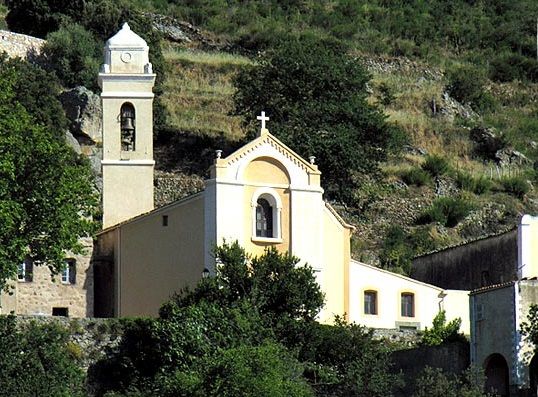
The parish church of Saint Joseph is located in the heart of the village on Avenue Hui Bon Hoa, next to the old friary. It houses a number of classified works of art.

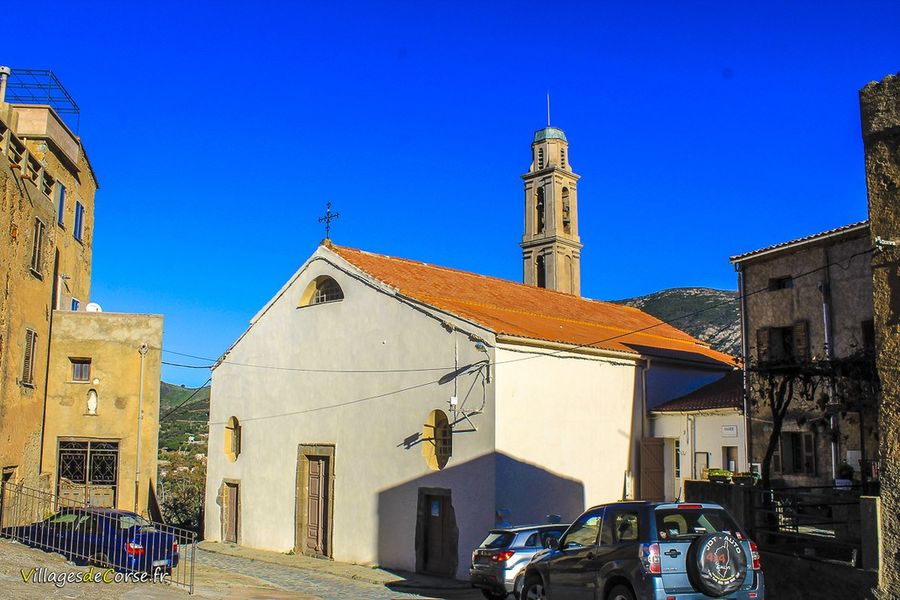
Formerly the church of the Assumption, it is now the parish church of Saint Bartholomew. It dates from the 2nd quarter of the 17th century. Rebuilt in 1620, then reworked in 1627, it features a 3-level Baroque bell tower with a small lantern.


The amazing tombstone of Damaso Maestracci, whose naive art reminds us of the work of Ferdinand Cheval, is located in the cemetery's north entrance. He was the creator of the War Memorial and also bedecked his own house with some imposing curiosities.

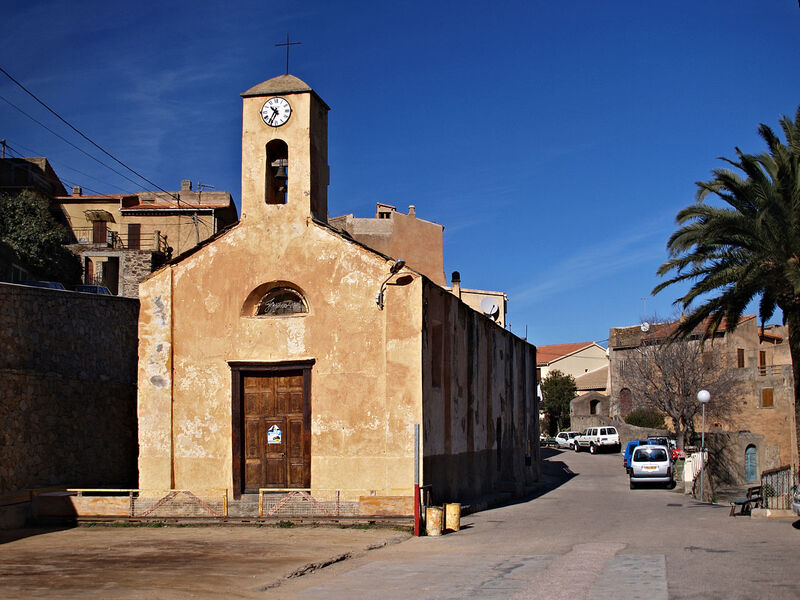
The recently-renovated Friary building is occupied by the Association Per l'Animazione d'Ochjatana. This ancient chapel boasts remarkable acoustics. During the summer season drinks can be purchased here.

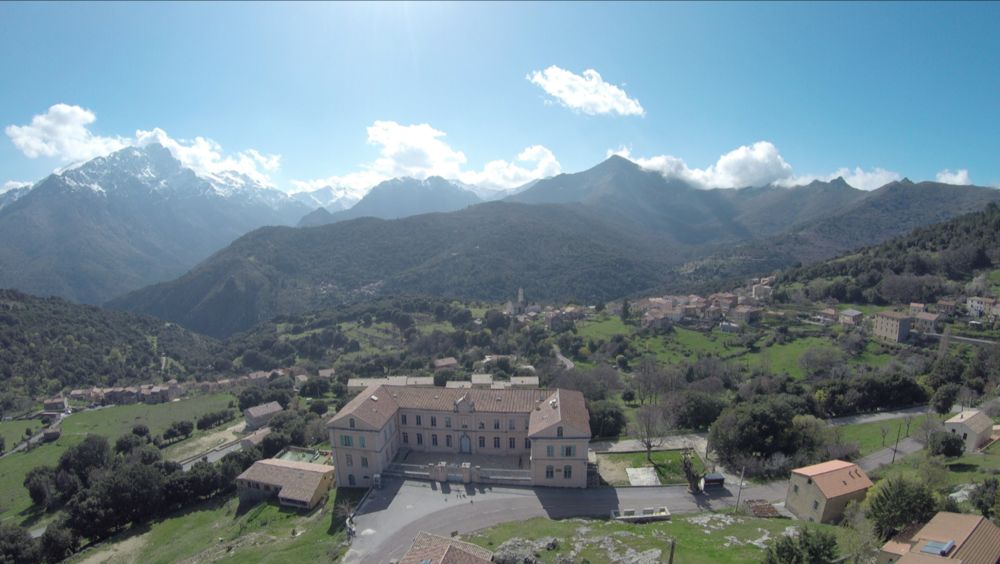
This impressive building was built in 1902 thanks to a donation from a "local boy", an 18th-century trader who had made his fortune in Egypt. It was the first college ever built in Balagne.

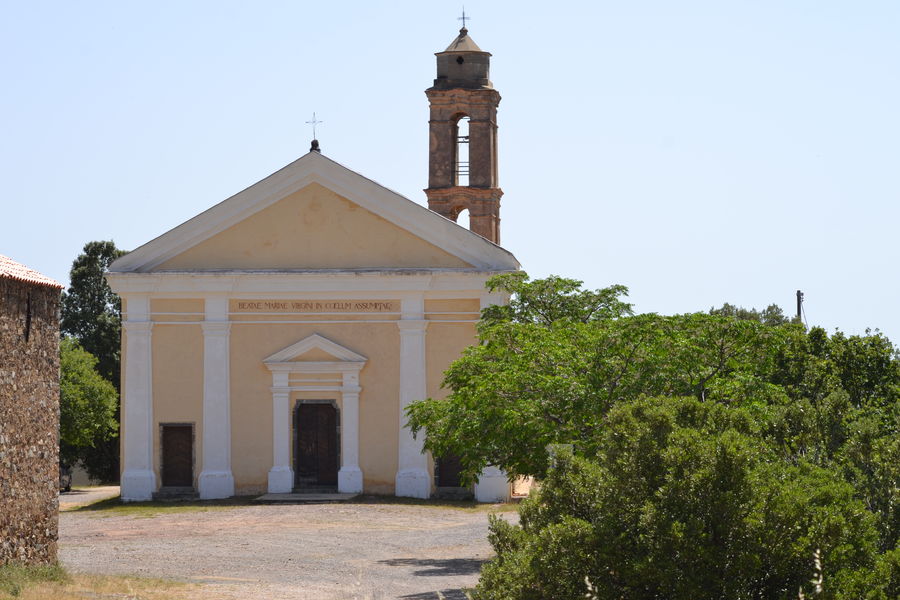
Dedicated to the Virgin Mary, this church was built in the 13th century and reworked during the 16th. On 15 August, it hosts a performance of polyphonic hymns from the village by the cantor of the San Parteu friary. It used to be a pilgrimage venue for the entire Balagne region on 12 May, St Pancras day.

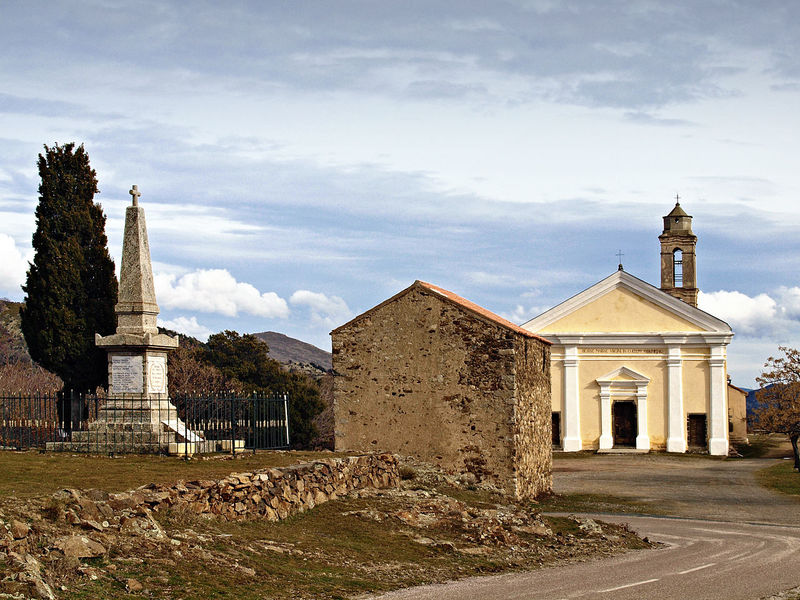
Sainte-Croix has become the chapel of the San Parteu friary. Until 1935, an Easter Monday procession took place from the chapel to the foot of Monte San Parteo in honour of St Parthée, the 5th-century saint who was popular in the Ghjunsani region.It contains four remarkable works, classified as Historic Monuments, all of which are the property of the commune: a still life painting on canvas painted in oil, from the 18th century, which comes from the Fesch collection; brotherhood seats (stalls for the confreres) in carved wood, waxed, dated from the beginning of the 18th century; a statue of the procession of Christ on the Cross, dated from the 18th century, in polychrome wood; a statue of the Virgin Mary in Majesty from the 18th century, in gilded polychrome wood.

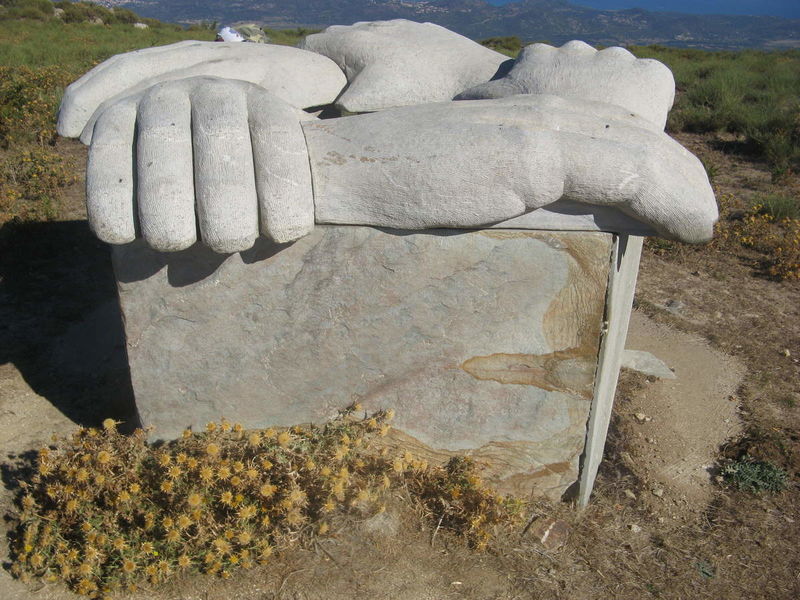
At an elevation of 1,100 metres, this sculpture represents mutual aid and solidarity, with five hands - the five continents - united for Peace. It was created by sculptors A-M Moretti, Andros, Dom, P. Pardon and M. Sabaty, on the basis of a drawing by a child, Arnaud Casanova.

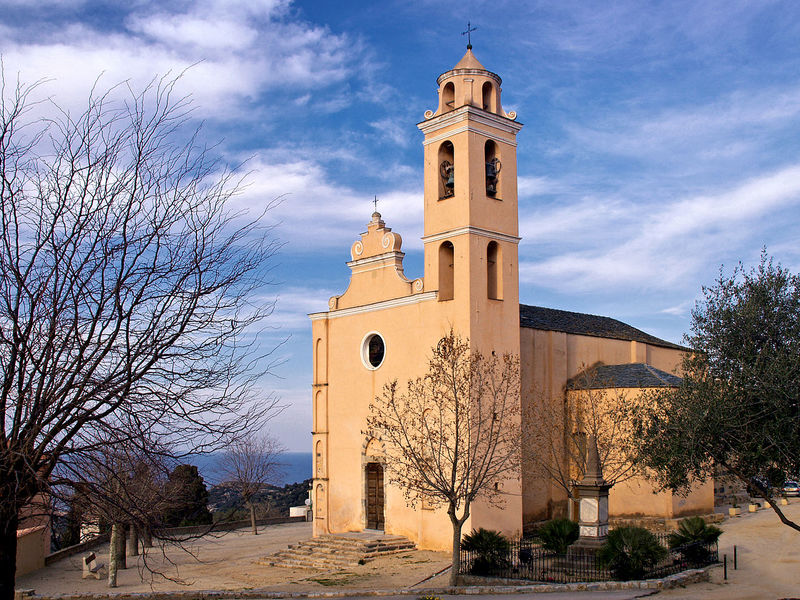
The Parish of Santa Reparata is located on a spur where the church and bell tower stand tall. They were built during the 16th and 17th centuries, most probably on the site of an older building of which only the apse and the south wall of the choir still remain.

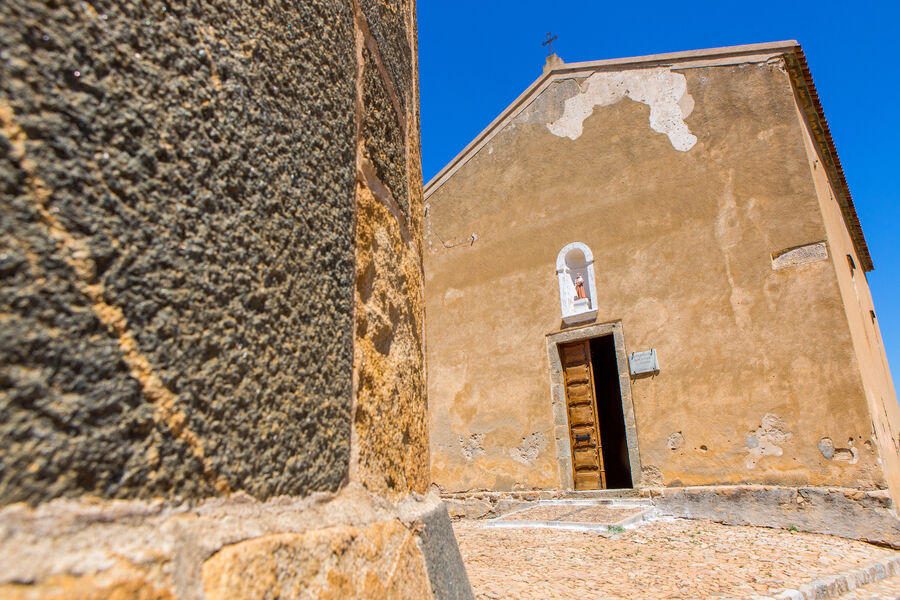
The friary of Sant'Antone, behind Santa Reparata church, was built in 1600 and restored in 2005. In 1618, it was fitted with wooden stalls made by the Genoese master, Joannes Andreas Lucchini, and frescoes were painted on the ceilings.


The chapel belongs to the municipality and stands on the edge of Santa Reparata on the road to Monticello. Dating from the 17th century, it is dedicated to the illustrious Franciscan preacher from Tuscany. San Bernardinu is celebrated on 20 May.

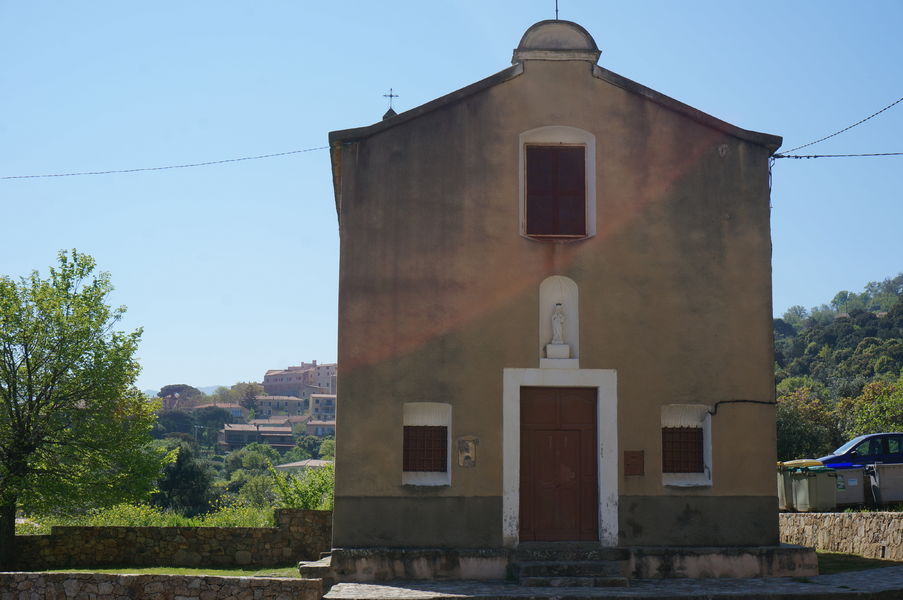
Dating from the 18th century, it was originally an oratory. It features some marble frescoes and a superb wooden sculpture of Christ by Antoine Franceschini, a village craftsman who also had the gift of healing. The roof was restored in 2003.

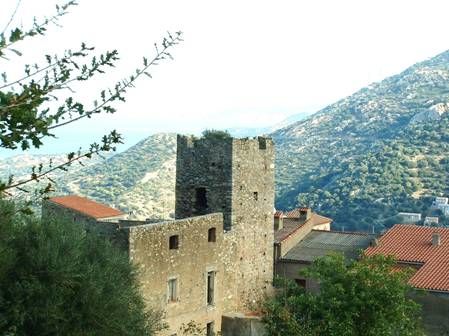
During the Middle Ages, the fiefdom of Santa Reparata surrounded the old castle and four towers of Palmentu. The oldest of the towers dates back more than a thousand years. Two of them are still partially visible and have been converted into housing.


Built by Capuchin monks in 1606, it was abandoned during the Revolution.

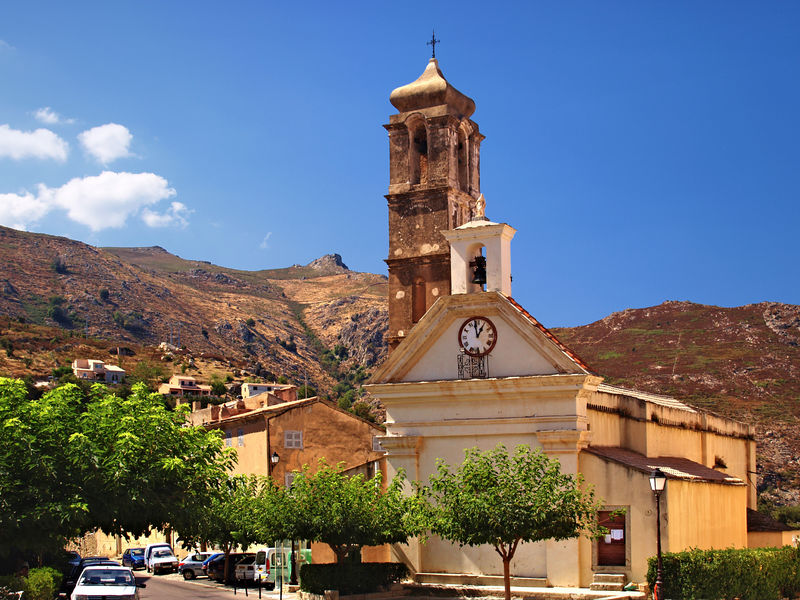
During the 12th century, the church was used by the inhabitants of Giustiniani. Located on the village square, it is the seat of the friary of Sant'Antone Abbate. It features a listed altar, an 18th-century tabernacle, and a silver reliquary on St Roch wood.


The collegiate church is extremely old. The original Romanesque church was built in 1509. Its status of exceptional collegiate church was granted by Pope Benoit XIV on 6 December 1749, and confirmed by Pope Clement XIII on 6 May 1766. It was restored in 1970.Its façade dates from 1509 and its Nicolas Filippi Way of the Cross from 1746. It contains a tabernacle with twisted columns, inlaid wood and varnish from the 18th century (listed), numerous paintings including "The Last Communion of a Holy King", oil on canvas from the 17th century (listed) and the shrine of the relics of San Vittoriu, a martyr from the end of the 3rd century. The church has a historic Crudeli organ (1810) and a gallery (1821) by Anto Giuseppe Saladini, born in Speloncato. It is the seat of the Oratory of the Confraternity of Santa Croce.

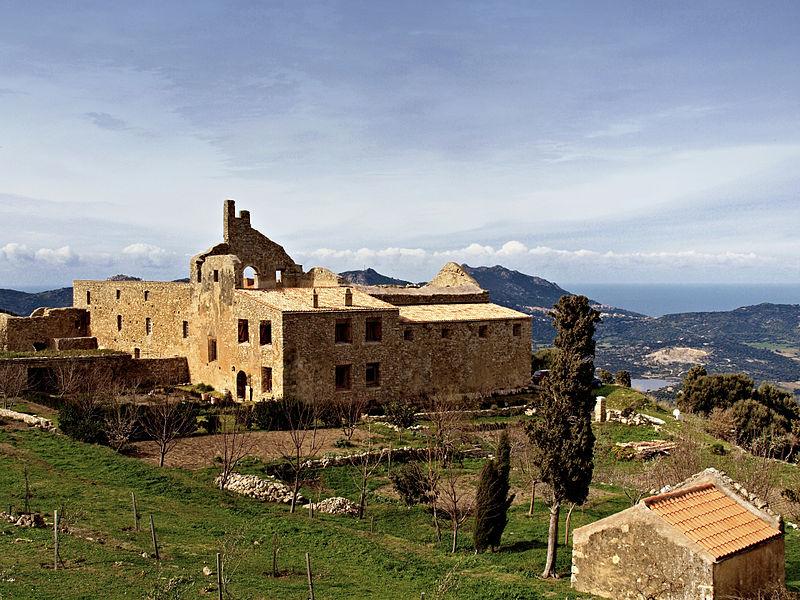
Built by the Capuchin monks in 1621, the convent was in ruins before being restored and converted into housing. It was made famous by a spring that supplied it with water from the Carignelli, an excellent cure for a number of ailments.

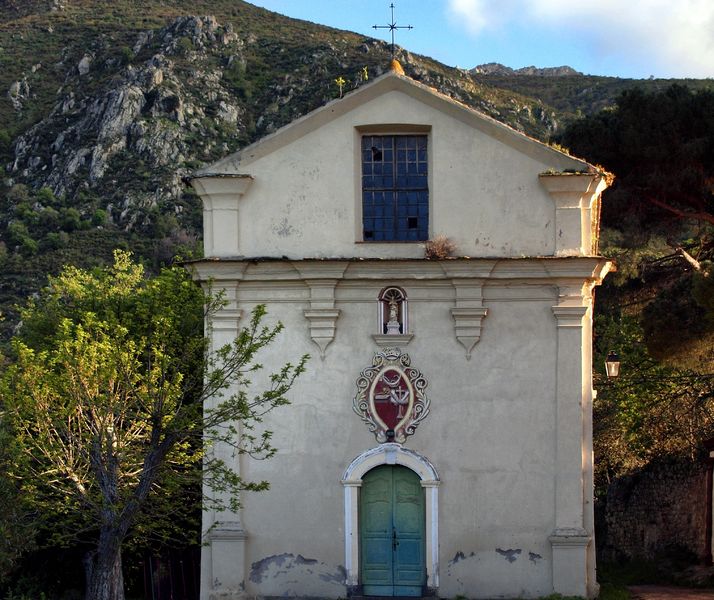
Adjoining the church, which was decorated by Italian artists, it is now a venue for contemporary art exhibitions. Near the church you'll find some monumental tombstones, including those of the Filippi, Taddei and Malaspina families. There are also some private chapels.

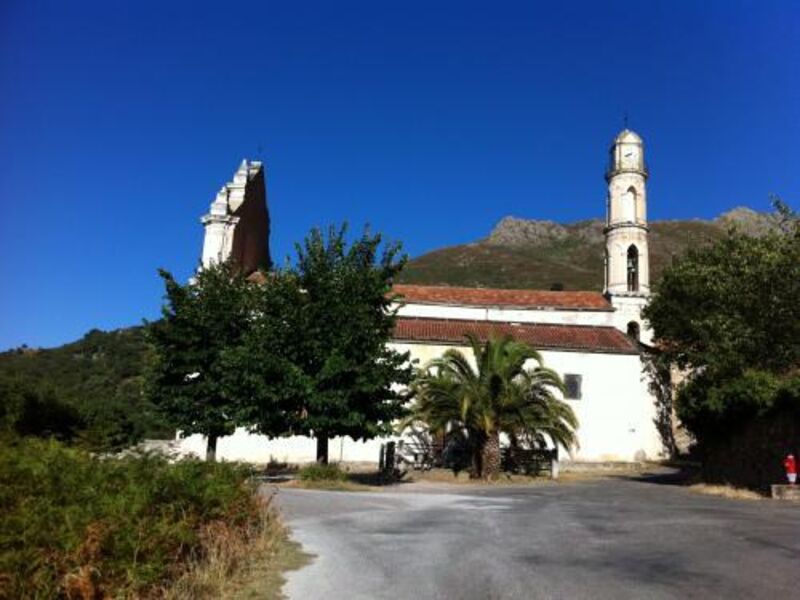
The parish church of Saint Simon (San Simonu) is of Baroque style and dates from the 18th century. This vast structure features a 4-level bell tower with a clock and stands beyond the village on a spur, at an elevation of 300 metres.

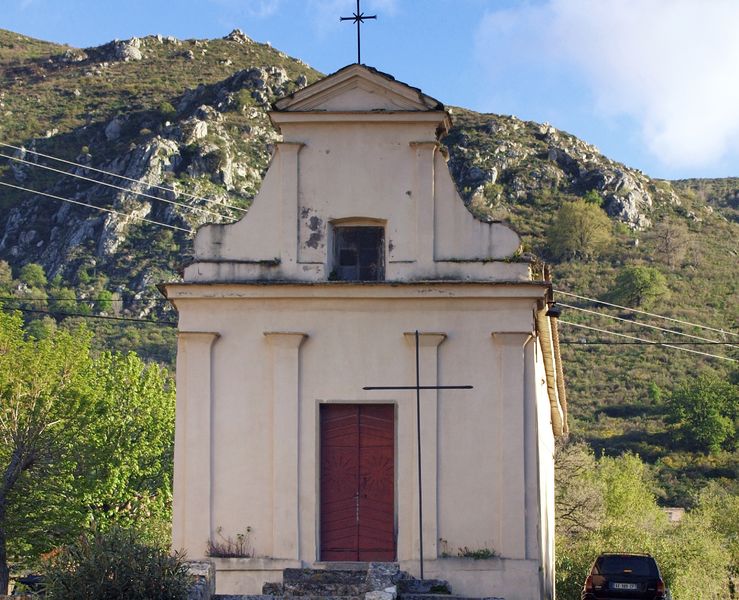
The chapel of Saint-Roch (of San Roccu) is a small building located above and behind the Sainte-Croix friary chapel and the parish church.

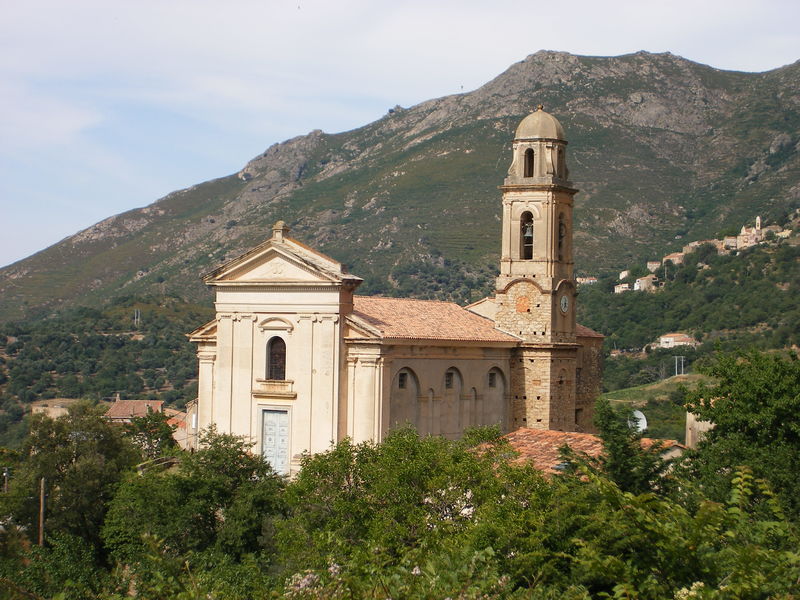
Saint Nicholas church is of Baroque style. It was built towards the end of the 18th century, probably in replacement of a Romanesque chapel from the 16th century.


Santa Reparata straddles the hills of Santa Suzanna and the Mont Sant'Angelu. Take your pick, between the blue-green blend of the Palazzi Valley and L'Ile-Rousse Bay, or the wooded countryside of the green Reginu Valley.

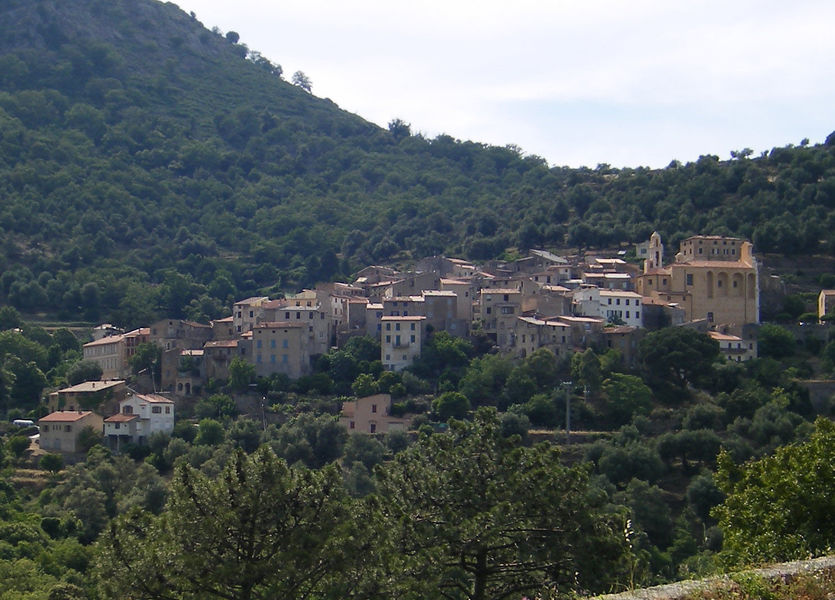
Perched high in the foothills of the Montegrosso massif, cradled by the surrounding high peaks, Feliceto is a proud mountain village nestling in a little corner of the Reginu valley.

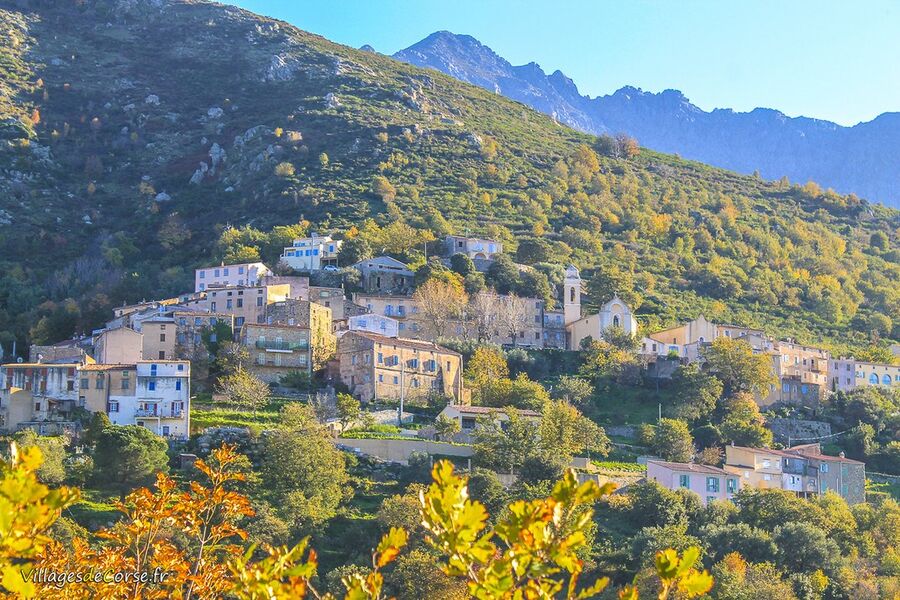
On Balagne's arts & crafts route, take the road to Nessa. This small village may not be the biggest tourist attraction, but it bathes in a lovely warm and friendly atmosphere.

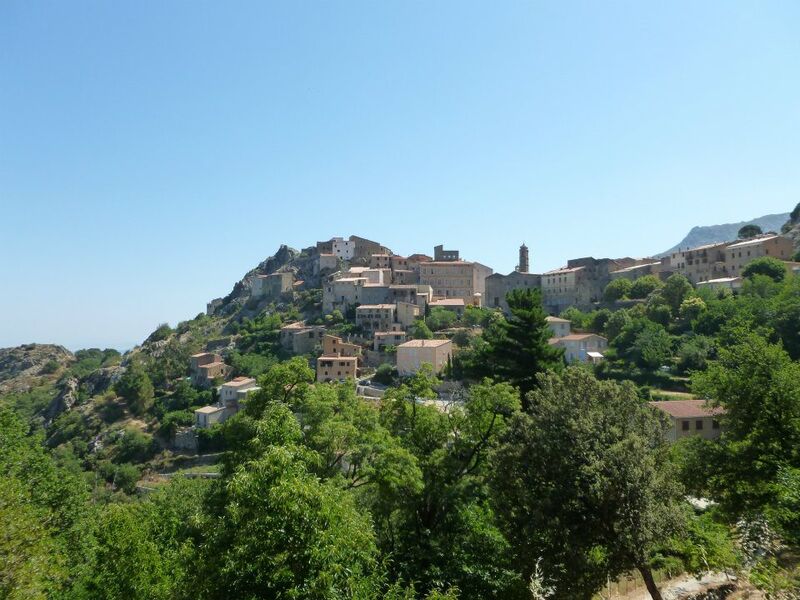
This has been a place of retreat for thousands of years. Some items of Neolithic furniture have been found here.


Ville di Paraso and the four hamlets (Rustu, Olivacce, Querci and San Roccu) have been clinging for centuries to this rocky spur planted with majestic trees that are ages old.

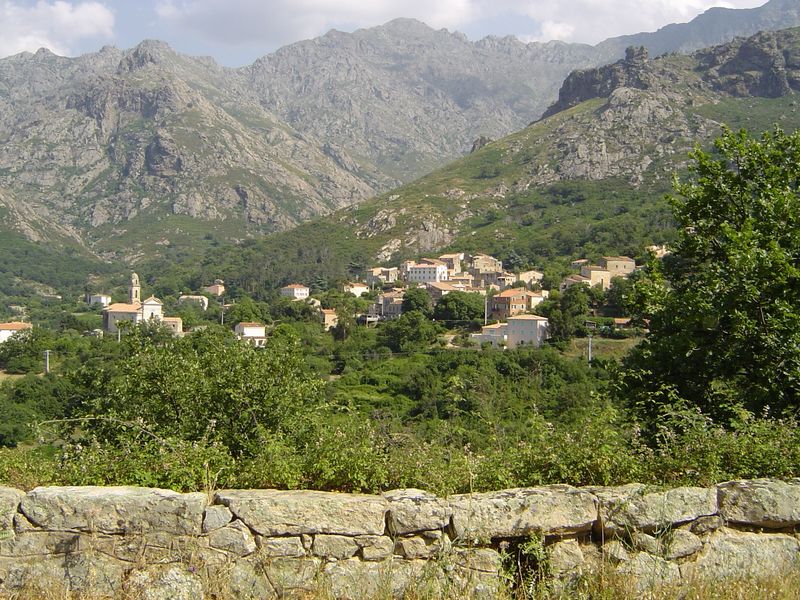
Balagne's smallest village has some pleasant surprises in store for you. Costa is a wonderful place, full of old stone houses, alleyways and arches. The only way to visit is on foot.Next to the town hall, the Malaspina House, a beautiful residence built in the 17th century, overlooks one of these vaulted passages. Take your time in Piazza Cumuna. Stop in front of the church of San Salvatore and enter to admire its paintings, olive tree statues and beautiful organ.
And if you feel like quenching your thirst, push on to the 17th century washhouse where the water gushes out of the fountain with a purity equalled only by its freshness.

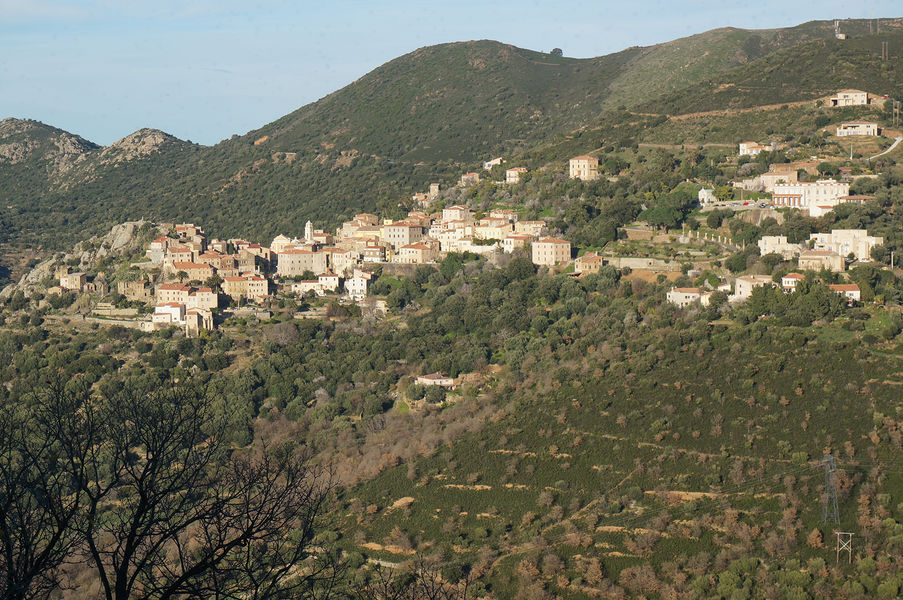
Succumb to the poetic charm of Occhiatana. Built on the Pinzu Sordu mountainside, this beautiful village offers a magical blend of tradition and modernity.

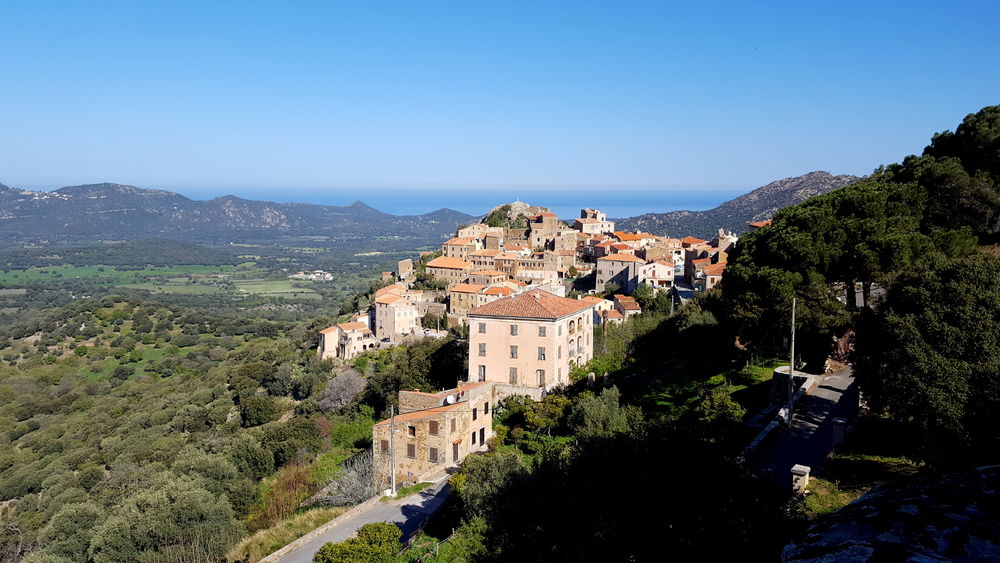
Standing proudly on its rocky spur overlooking the Reginu valley, the vibrantly colourful village of Belgodere invites you to explore the district of La Cima and the Malaspina castle!Follow in the footsteps of the Marquis of Massa, a powerful feudal lord, who one day in 1268 retreated to the top of the teghje (rocks) before deciding to settle there.
Explore the fortified part of the village of Belgodere, you won't regret it! Pass under one of the three vaulted entrances and visit the Cima du Fondu and Cabanne districts. Climb to the top of the teghje on the remains of the tower and enjoy the exceptional view.
Take a break in the centre of the village and sit at a café before heading to the parish church, which is a listed monument. Don't forget to look up on the way out of the village if you're heading towards Costa to see the Malaspina Castle.

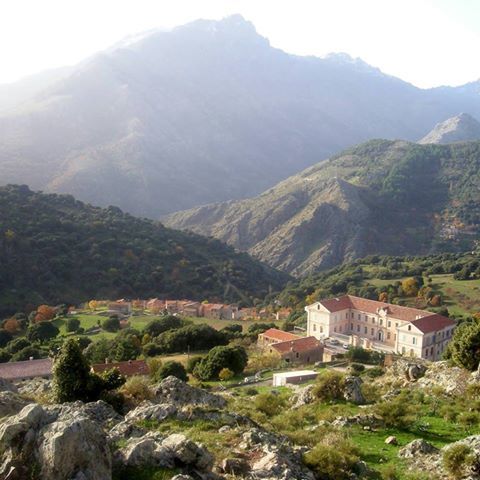
In a decor of rock, gushing mountain streams, chestnut trees and evergreen oaks, discover Olmi Cappella. The Casa Battaglini, the beating heart of the village, and the saviu verde, a majestic oak, are the features of this peace haven at the foot of the Ghjunsani mountains.

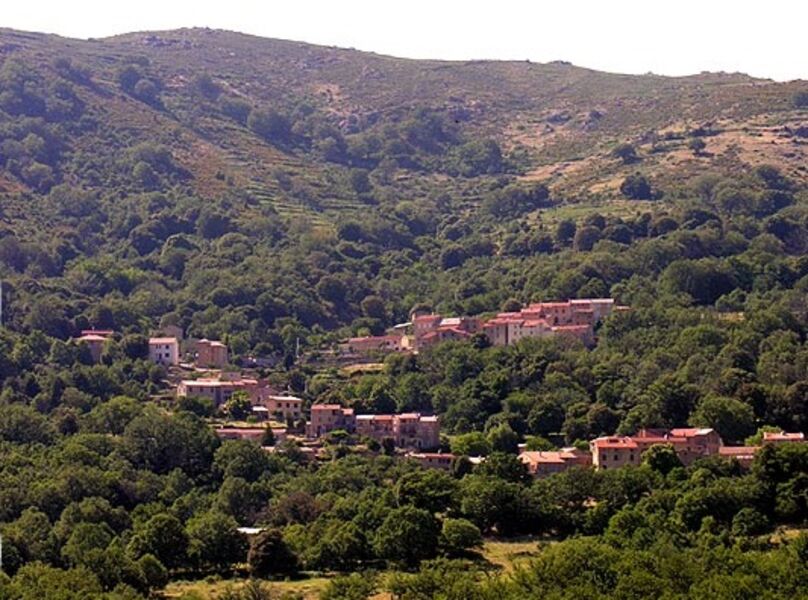
Discover the forces of nature in the heart of the Balagne mountains. Cool off in this small village in the shade of oak and chestnut trees. Pioggiola offers an alternative way to explore Balagne.

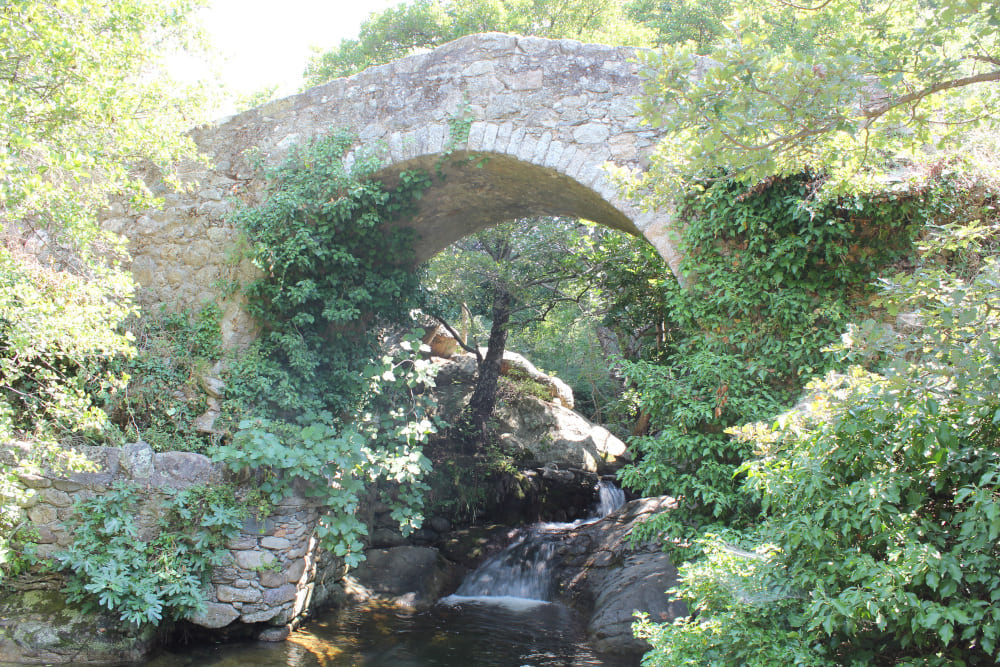
The village of Feliceto takes its name from the happiness of water. In fact, the village has many natural springs. With its rivers and waterfalls, Feliceto offers two Genoese bridges that allow the discovery of its heritage and pleasant moments of bathing depending on the season.




